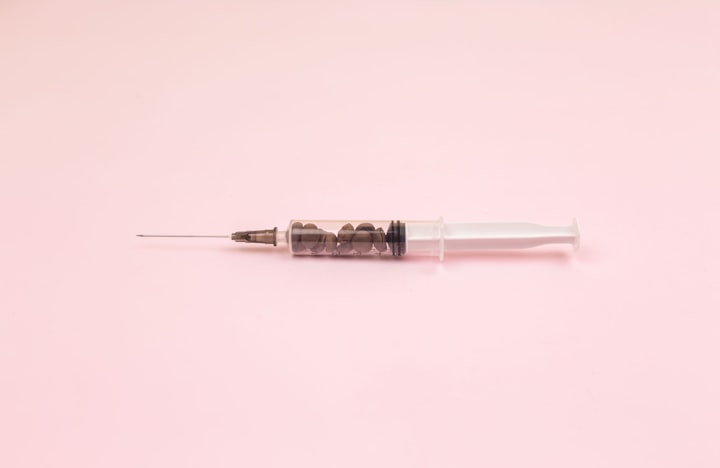What are the best skin treatments? Medical grade versus DIY facials.
How medical grade facials differ from DIY masks at home.

Recently, I have been looking to improve my skin care regimen. My current routine consists primarily of moisturizers and serums. I also use sunscreen when I'm outside. Sometimes, I do a home facial or scrub. I researched home facials online to find out which ones are best for hydrating and preventing signs of aging. I found a lot of the same ingredients and, while most were highly recommended, the majority of positive reviews focused more on how relaxing and enjoyable it was to have a home facial. Although I agree that a home facial is a great addition to self-care days, I don't think I have seen more than a slight hydration or temporary firmness after leaving it on my skin for too long.
Apart from DIY facials, I've also had professional microneedling sessions. This seemed to make a big difference after several sessions. There are many other medical-grade skin tightening products out there. I did not know this, so I researched them to find out if they worked or if I should just stick with my home facials. Here is what I discovered.
What are Medical Grade Skin Treatments? What do they do?
My first realization was that almost everything can be treated medically. There's a procedure for every purpose, whether you want to reduce wrinkles and tighten your skin or work on pigmentation and sun damage, or even eliminate scarring and this website has a laundry list of medical treatments to choose from. Since they are most similar to home facials, I will only be focusing on the "facial-like" treatments. These treatments include lasers and microneedling. Some non-invasive treatments may also be available that require professional supervision.
Microneedling
Microneedling is also known as mechanical collagen injection therapy. It involves the use of a small motorized hand tool with several needles (typically 33 gauge) at the tip to penetrate skin up to 2.5mm depth. A trained professional then carefully moves it around the treatment area.
This treatment is most effective for the neck, face, decolletage and sometimes the scalp.
The body responds to micro-damage caused by needles by producing collagen and elastin. The skin becomes tighter, firmer and thicker as a result. It is also less prone to scarring and wrinkles. Moreover, existing scars and wrinkles will be reduced.
There are many types of microneedling
2. Dermaroller
The Dermaroller uses microneedling in a different way to the one described above. It is a handheld device that has a tip covered with tiny needles and is used to roll the area. It can be used at home, or by a doctor.
You will be cleaned and given a topical numbing lotion to help with the pain. After the procedure is completed, you can apply a serum to your skin to give it additional nourishment and hydration.
The process takes only 15 minutes and can easily be repeated once a week. It takes very little downtime and you will feel a mild soreness or dryness. Redness can also be experienced. These symptoms disappear within one to two days.
2. Dermapen
The Dermapen, a motorized hand-held apparatus that punctures skin with needles attached at the tip, is the motorized version of the Dermapen. It is usually necessary to apply numbing cream after the area has been cleaned. This can reach up to 2.5mm in depth. This form of microneedling takes between 15 and 25 minutes depending on how the patient responds to the pain and the area being treated. The downtime is minimal and only lasts two days. Redness, dryness, or possible soreness are all temporary.
Radiofrequency
Morpheus8 microneedling uses a larger applicator that emits radiofrequency (RF) waves through needles. The radiofrequency also causes controlled damage to the skin's superficial musculoaponeurotic layer (SMAS). This layer is located below the dermis' fatty layer and cannot be reached by regular microneedling sessions. The body makes more collagen and elastin due to the heat damage. RF is a superior and advanced option. Patients who desire a dramatic outcome, have scarring or mature skin, want to reduce skin laxity, or who need more collagen and elastin are often referred to RF microneedling.
This therapy is only available once per month and requires more recovery. Side effects include redness, swelling, and, if done incorrectly, scarring.
Transdermal delivery for drugs, serums and solutions
Microneedling is a method that delivers nutrients and medications directly to the skin. Sometimes, the needles can be hollow and simultaneously inject customized solutions. These solutions often contain the following common ingredients:
Vitamin C
Vitamin C is an essential vitamin for the skin's overall health. Vitamin C aids in differentiation of keratinocytes. These cells are located in the epidermis. They produce keratin and cytokines as well as growth factors and interleukins. Studies have also shown that vitamin C may increase the melanin levels, which protects our skin from damage caused by ultraviolet radiation.
Peptides
Peptides amino acids make up specific proteins that are required by the skin. Collagen is made up of three polypeptide chains. This means that peptides can be added to your skin to stimulate collagen production.
Neurotoxins
Botox and other neurotoxins are best known for their ability to reduce wrinkle formation. Intradermal Botox Treatment is believed to reduce the production of sebum. This can in turn affect pore size, sweat production, and red and brown marks left over from acne.
Hyaluronic acid
Hyaluronic acid may be listed in many skin care products and serums' ingredient lists. The body naturally produces hyaluronic acid and it hydrates the skin by absorbing water molecules from the area.
Lasers
A wide range of lasers can be used to tighten and improve the quality of the epidermis and dermis. Lasers can be used in many areas of the body, including the neck, face, decolletage and, depending on the case, other parts of the body.
Lasers can be classified into two types: ablative or non-ablative.
Ablative
Completely removes the epidermis, heats the dermis, and causes collagen production due to heat damage.
Numbing cream is usually required
As new skin develops, downtime can last between 2 and 4 weeks. It may include redness, tenderness and itching.
Non-ablative lasers are more invasive
Non ablative
Only a small portion of the epidermis has been damaged while most of the surrounding cutaneous layers are unaffected
Numbing cream is usually required
There is minimal downtime, lasting from 1 to 2 weeks, including redness and swelling, dryness or itchiness, and skin flaking.
Non ablative lasers are less invasive
What are lasers used for?
Laser treatments can enhance the quality of your skin depending on which laser is used.
Skin is tightened and firmed
Reduces pore size
Reduces fine lines and wrinkles
Reduces crepiness
Hyperpigmentation and sun spots can be eliminated
Improves sun damage
Produces collagen, elastin
Face masks available over the counter
I did research on OTC skin masks, their primary ingredients and how they can improve your skin's quality. Here are the results:
Primary ingredients
Salicylic acid
The skin can be treated with salicylic Acid by applying it topically. This will help to shed dead epidermis cells and reduce inflammation.
Benzoyl peroxide
Benzoylperoxide can be found in many acne medications. It works by reducing acne-causing bacteria.
Vitamin C
Vitamin C can also be used topically in order to increase collagen and elastin production, which will help keep your skin plump and firm. You may also notice it in sunscreen's ingredients list. Vitamin C can protect your skin from the sun.
Hyaluronic acid
Hyaluronic acid is a good way to moisturize the skin. However, it must be mixed with water to achieve hydration. It's not as effective when used topically on dry skin.
Sulfur
Sulfur has antibacterial properties that can reduce acne-causing bacteria. It is also the third most commonly produced bacteria by the body.
Charcoal
Activated Charcoal is a skin-care product that binds dirt and oil and then pulls it out. This makes pores appear smaller.
Although DIY home facials are beneficial for your skin in a variety of ways, including hydration and mild sun protection, they don't always work well when applied topically. Microneedling is a method that allows these compounds to penetrate deeper layers of the skin.
DIY masks can be very beneficial. However, medical-grade skin treatments are better.





Comments
There are no comments for this story
Be the first to respond and start the conversation.